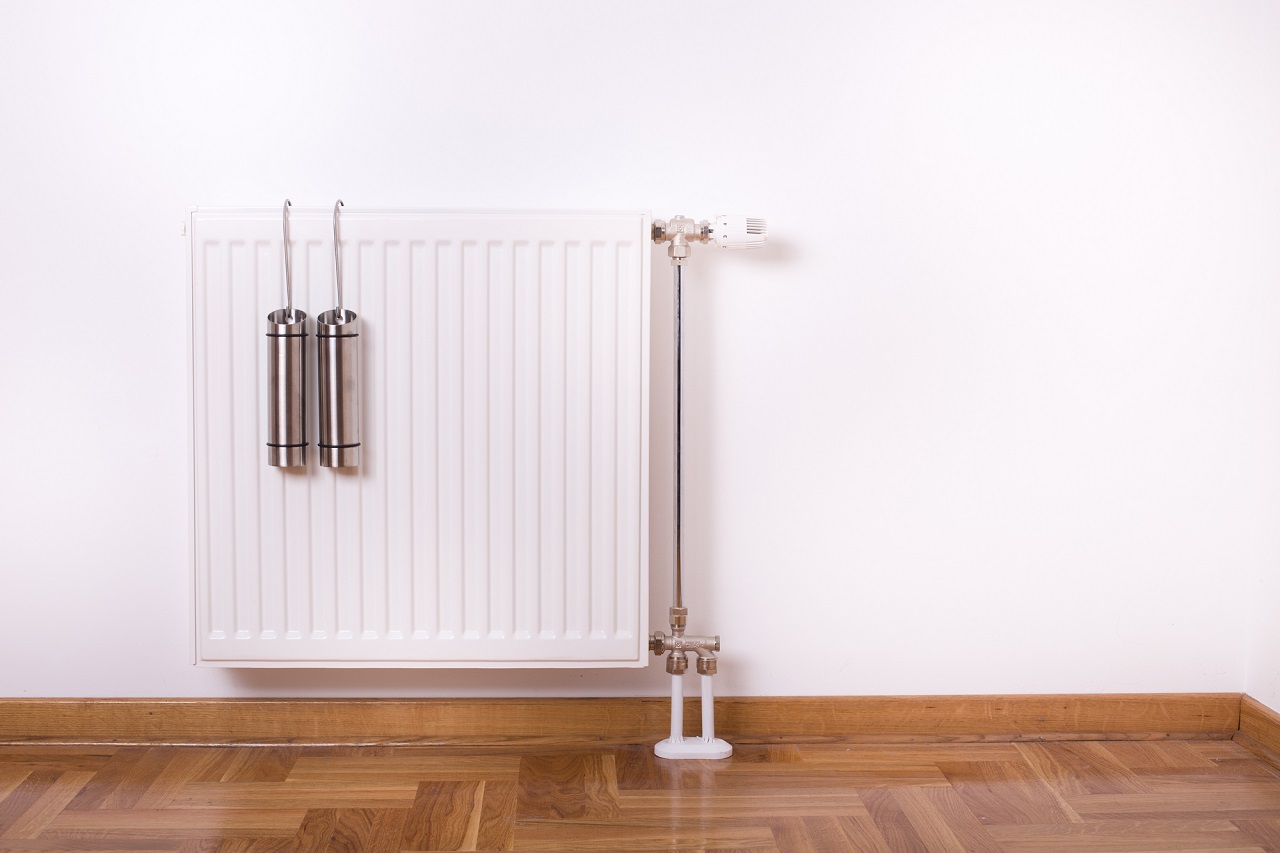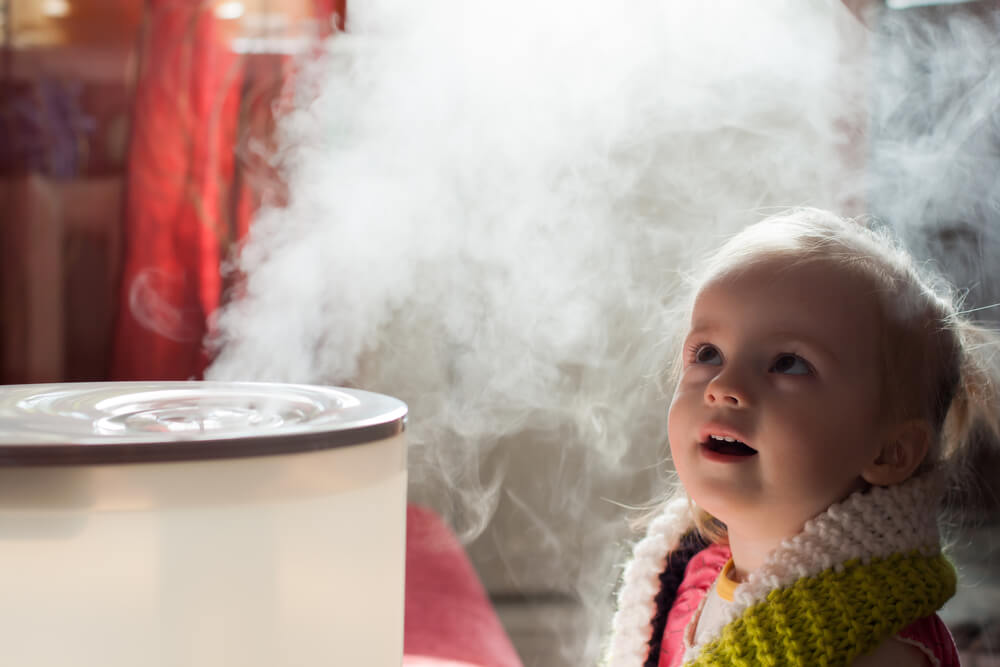A regular electric humidifier is the best way to add moisture to dry indoor air. But if you are looking for a cheaper alternative, you can use a radiator humidifier.
A radiator humidifier uses the heat from a radiator to add water vapor to indoor air, helping combat dry winter air.
Below is a guide on how to make a radiator humidifier plus other cheap ways you can humidify your home without using an electric humidifier.
What Is A Radiator Humidifier and How Does It Work?

Regular standalone humidifiers work by producing a mist or vapor. They all run on electricity.
That’s where a radiator humidifier stands out. It’s a passive and non-electric humidifier.
It’s passive because it doesn’t do anything to actively humidify indoor air, instead relying on the radiator to create water vapor.
A radiator humidifier is just a device or container that you fill with water and hang or place on the radiator. When you turn on the radiator, it heats the humidifier and the water inside it. As the water evaporates, it humidifies the room.
You can buy a radiator humidifier designed to work with any kind of radiator heater including steam, hot water and electric radiators. Some are made from plastic, but the best ones are ceramic.
You fill the device with water and hang it on the radiator. Below is a video showing a ceramic radiator humidifier.
You can also make your own radiator humidifier by placing a heat-proof container of water on top or near the heat radiator.
Pros and Cons of Radiator Humidifiers
The Good
- They are cheap compared to electric humidifiers. DIY radiator humidifiers are actually free.
- Radiator humidifiers are also cheap to run since they don’t use any electricity. As you warm your home using the radiator, you also get humidification with no additional energy consumption.
- Radiator humidifiers are easy to maintain. You only need to occasionally add water and clean the container.
The Bad
- Radiator humidifiers are nowhere as powerful as electric humidifiers. The water evaporates slowly, which can take forever to humidify a room. For this reason, radiator humidifiers work best for small rooms or if you need to add just a bit of humidity to a room.
- Radiator humidifiers only work when the radiator is turned on. They are usually useful only during the cold months, when homes turn on their radiator. In contrast, an electric humidifier can be used all year round.
How To Make A DIY Radiator Humidifier
If you don’t feel like making a DIY humidifier, you can buy a ready to use radiator humidifier online. Look for a ceramic or metal humidifier that’s easy to hang against your radiator.
If you prefer a DIY radiator humidifier, it’s super simple to make.
All you need is a heat-proof container made from materials like metal, ceramic or heat-resistant glass. You can use a metal bowl, a ceramic plate or heat-resistant glass tupperware.
Fill the container with water and place it on the radiator. You can also place it on the floor next to the radiator if it’s not possible to place it on top. The water will gradually heat up and evaporate.
One advantage of buying a radiator humidifier instead of buying one is that the store-bought ones are designed for maximum contact with the radiator.
So they heat up faster and provide better humidification. So if you are using a container, it can take several hours to feel any difference in the room.
Tip: Add hot water to a radiator humidifier to get faster results. It will take less time for the water to turn into water vapor.
Other Ways To Humidify Your Home Without Using A Humidifier

Here are a few other simple ways to humidify your home without using a humidifier. You can use this in addition to a radiator humidifier to quickly increase humidity.
1. Use Any Other Heat Source
You can use the principle of a radiator humidifier to make a humidifier out of any other heat source.
For instance, placing a container of water on floor heat vents will have the same humidifying effect as a radiator humidifier.
You can also place a water container on or close to a fireplace and use that heat to evaporate the water.
If you are using an electric space heater, that can work too. Just be careful not to place the water too close to the heater in case of a spill.
2. Open Water Containers
The above method requires a source of heat. This creates the same limitation as a radiator humidifier – you cannot use it all year round since there are months when you don’t need heat.
If your home gets dry during the summer months, try leaving open water containers around the house. Though the water will evaporate a lot slower than a container on a radiator or fireplace, it will still add a decent amount of moisture to the air.
The warmer weather will speed up evaporation.
You can also speed things along by using a fan. Place a container of water in front of a fan. The air blowing across the water will evaporate it quicker, helping humidify your home. It’s also a great way to cool your home when it’s hot.
This is actually how air coolers, also called swamp or evaporative coolers, work. You can use an air cooler to cool and humidify your home at the same time.
3. Cook On The Stove
Cooking releases a surprisingly high amount of water into the air.
Most foods contain a decent amount of moisture. This water is released when you cook. Combined with the water you add to the food, you can easily humidify your home while you cook.
To keep your home humid most of the time, try to cook as often as possible. Specifically, use the stovetop (it can be induction, electric or gas).
Cooking on the stovetop releases the most amount of moisture compared to an oven or microwave.
Ideas include making your tea on the stovetop, making homemade broth and letting it simmer for hours, cooking your stews on the stove instead of finishing them in the oven and so on.
Appliances like electric kettles and slow cookers can also add steam to your home by releasing steam.
The main downside of relying on cooking to humidify your home is that it mostly humidifies the kitchen. It can actually make the kitchen too humid.
The best way to solve this is using a fan directed away from the kitchen. It’ll push the moisture-laden air to the living room and other rooms. Make sure you open doors to other rooms.
Also, make sure you turn off the kitchen extractor fan and close the kitchen windows to avoid having all that moisture escape.
4. Add Indoor Plants
Only a little of the water plants absorb from the soil is actually used by the plant. The rest of it – between 97% and 99% – is released into the air through transpiration.
So indoor plants make for great humidifiers. And unlike a radiator humidifier, indoor plants will keep your home comfortable throughout the year.
Some indoor plants are better than others at humidifying your home. The best indoor plants for tackling dry air include spider plant, English ivy, jade plant, lady palm and corn plant.
5. Air Dry Laundry Inside The House
Instead of using the dryer, hang your clothes inside the house. As they dry, they release moisture and humidify your home.
Get a clothes drying rack and place it in the room where you need to increase humidity. To avoid dripping water on the floor, give the laundry an extra spin cycle in the washer. They’ll come out damp but not dripping.
You can place a fan next to the clothes to get them to release moisture faster. The fan also helps spread the moisture around the room or house.
6. Take A Shower or Bath
Think of all the steam that fills the bathroom when you take a shower. You could use that to reduce dry air in your home.
It’s especially effective if you want to make an ensuite bedroom less dry when you sleep. Take a shower just before bed, making sure you leave the bathroom door open.
Turn off the bathroom extractor fan and close any windows to keep the steam from escaping outside. You can also place a portable fan near the bathroom door facing towards the bedroom. It’ll pull steam from the bathroom and into the bedroom.
If you are more of a bath person, that can also work. Leave the bathroom door open to allow steam from the bathtub to move into the other rooms.
When you are done, don’t drain the water. As it cools in the tub, it will release more moisture.




